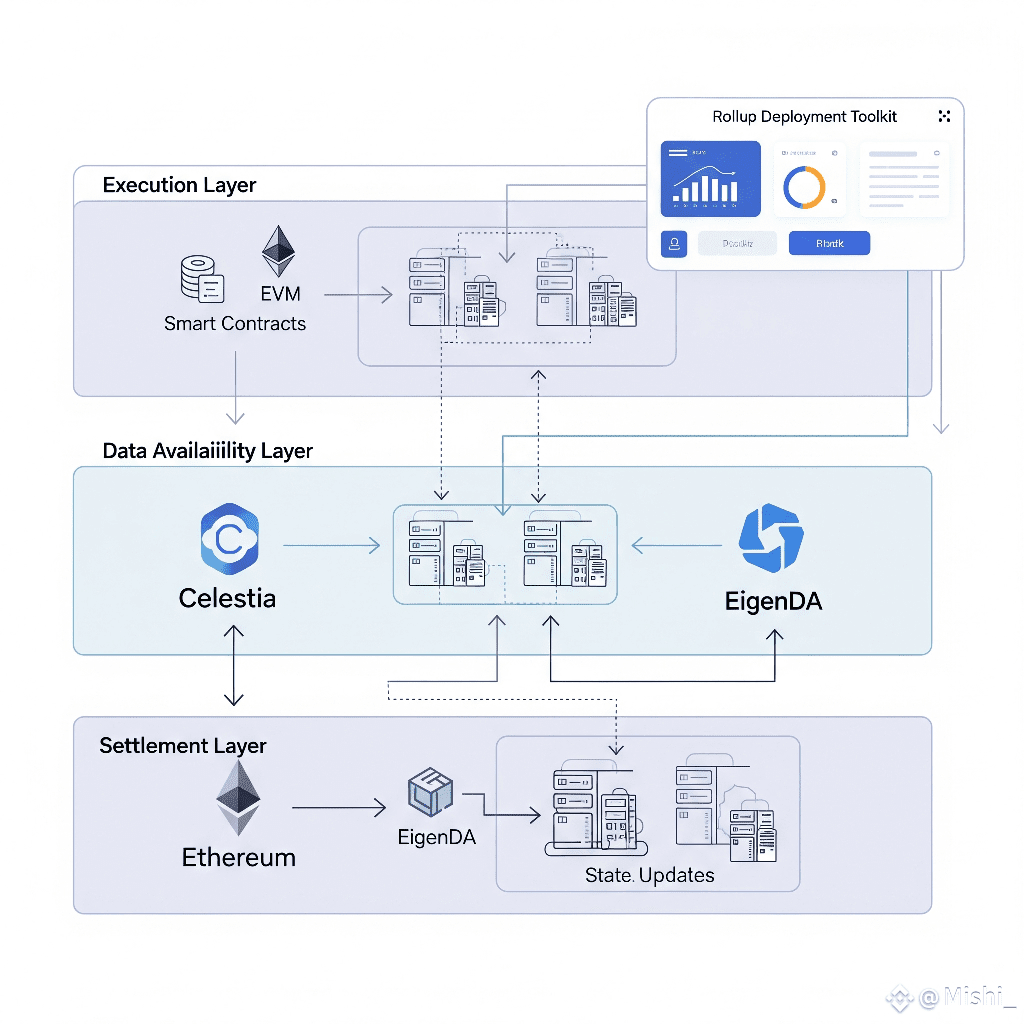In the fast-paced world of Web3, scalability and user experience are the two biggest bottlenecks hindering mass adoption. The current generation of Layer 1 and Layer 2 solutions, although revolutionary in their own right, often fall short when it comes to supporting application-specific scalability. Enter Caldera — an innovative platform that enables developers to launch high-performance, customizable rollups tailored to their applications.
@Caldera Official has introduced a modular framework that empowers developers to build scalable, decentralized apps (dApps) that don't suffer from shared network congestion or high gas fees. By separating consensus, execution, and data availability, Caldera allows for truly modular architecture — setting a new benchmark in blockchain scalability.
Why Monolithic Chains Are No Longer Enough
Traditional blockchains like Ethereum use a monolithic design, meaning consensus, data availability, and execution all happen on a single layer. While this design is simple and secure, it comes at a cost:
High gas fees due to network congestion
Slower transaction times
Limited throughput for applications requiring high-performance computation (e.g., games, DeFi protocols, social apps)
This leads to a poor user experience and stunted application scalability. The solution? Move away from a monolithic structure and adopt a modular rollup architecture — the core of what Caldera offers.
The Technical Architecture of Caldera
Caldera rollups are built with a clear separation of concerns. Instead of relying on a single base layer for everything, Caldera enables modularity across three main components:
1. Execution Layer
This is where smart contracts are deployed and executed. Caldera rollups use the Ethereum Virtual Machine (EVM), making it compatible with existing tooling and Solidity-based codebases. Developers can also choose their own custom execution environments depending on application needs.
2. Data Availability Layer
Instead of storing data directly on Layer 1, Caldera rollups can integrate with optimized data availability solutions like Celestia, EigenDA, or even Ethereum's DA solutions. This significantly reduces costs and increases throughput.
3. Settlement Layer
Rollups eventually settle on a Layer 1 blockchain, ensuring security. Caldera supports Ethereum and other ecosystems for finality and fraud-proof validation.
Key Benefits of This Architecture:
Scalability: High TPS without congesting Layer 1
Customization: Choose your own execution logic, fee models, and governance
Interoperability: Cross-chain communication via bridges
Security: Settlement on secure Layer 1s ensures trustless finality
How Caldera Simplifies Rollup Deployment
One of Caldera’s most impactful features is its developer-first tooling. The platform provides a Rollup-as-a-Service (RaaS) suite that abstracts away the complexities of launching and maintaining a rollup.
With just a few commands, developers can:
Configure their rollup’s parameters
Choose a DA layer and execution environment
Deploy a fully functional chain in minutes
This eliminates the need for deep infrastructure knowledge and months of engineering time.
Built-in Features Include:
Block explorer and dashboard
RPC endpoints and devnet support
Real-time analytics
Governance modules
Real-World Use Cases Powered by Caldera
Caldera is already powering a wide range of applications across DeFi, gaming, NFTs, and consumer-facing apps. Because each rollup is isolated, projects enjoy complete sovereignty and can design for specific UX needs.
Use cases include:
GameFi apps requiring instant micro-transactions
DeFi protocols needing high throughput for swaps and staking
Social platforms that want fast, cheap user interactions
Loyalty and rewards systems for consumer brands
Token Ecosystem: $ERA
Caldera's utility token, $ERA, plays a key role in ecosystem incentives and governance. Although the exact tokenomics are evolving, $ERA is expected to be integrated into:
Rollup deployment fees
Ecosystem grants
Developer rewards
On-chain governance decisions
It aligns all stakeholders in a shared economic framework, promoting growth and decentralization.
Why Caldera Represents the Future of dApp Scaling
With the Web3 space shifting towards modularity, Caldera is at the forefront of this evolution. Its approach empowers developers to focus on building great user experiences without being limited by infrastructure bottlenecks.
Caldera is not just another rollup — it's a platform for launching sovereign chains, optimized for real-world adoption.

Final Thoughts
If you're a builder in Web3, Caldera offers the infrastructure to take your application from idea to reality — without sacrificing performance or decentralization. With its modular design, seamless deployment tools, and robust community, Caldera is rapidly becoming the go-to choice for next-gen dApps.
Tagging @Caldera Official and joining the #Caldera #caldera conversation with $ERA is more than just marketing — it’s participating in a movement that’s redefining what blockchain can do.


